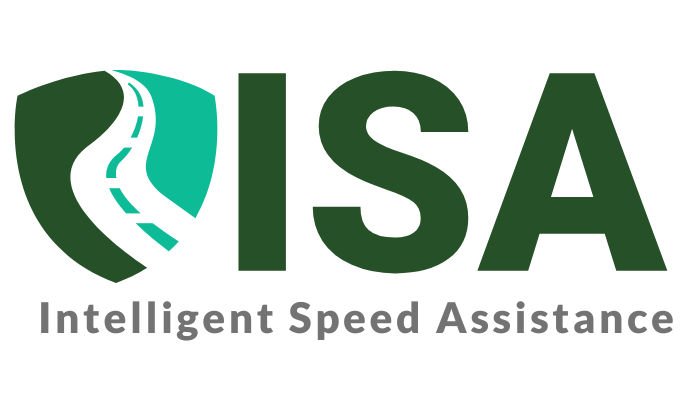Intelligent Speed Assistance (ISA) is no longer a futuristic concept. This innovative technology is rapidly integrating into vehicles, transforming how drivers interact with speed limits and promoting safer driving habits. Let’s delve into the real-world impact of ISA through compelling stories that showcase its potential to revolutionize road safety:
Story 1: The New Driver and the Unfamiliar Road
Sarah, a recent college graduate, embarks on a road trip across the country. Nervous about navigating unfamiliar roads and unsure of speed limits, she opts for a rental car equipped with ISA technology. As she cruises down the highway, the ISA system provides gentle chimes whenever she approaches the speed limit. This real-time feedback allows Sarah to adjust her speed seamlessly, ensuring she remains compliant and comfortable behind the wheel.
Key Takeaways:
- ISA empowers new drivers with the confidence to navigate unfamiliar roads safely.
- Real-time speed limit alerts minimize the risk of unintentional violations.
Story 2: The Busy Fleet Manager and the Safer Workforce
John, a fleet manager for a delivery company, struggles with speeding incidents amongst his drivers. These violations not only pose safety risks but also lead to costly fines and potential insurance premium hikes. He decides to implement ISA technology across the company’s fleet. With ISA, John receives valuable data on driver behavior, allowing him to identify individuals prone to speeding and implement targeted training programs. Additionally, ISA alerts prompt drivers to adjust their speeds, leading to a significant decrease in speeding violations and a safer driving culture within the company.
Key Takeaways:
- ISA technology offers valuable data for fleet managers to identify and address speeding within their workforce.
- Real-time feedback can lead to a significant decrease in speeding violations for fleets.
Story 3: The Volunteer Driver and the Community Focus
Maria volunteers for a local organization that delivers meals to homebound seniors. While prioritizing timely deliveries, Maria is also concerned about adhering to speed limits and ensuring safe driving practices. Her volunteer vehicle is equipped with ISA, providing her with constant reminders of speed limits in different zones. This allows Maria to maintain a safe driving speed while efficiently completing her deliveries.
Key Takeaways:
- ISA technology empowers volunteers with the ability to prioritize safety while fulfilling their community service roles.
- Real-time feedback ensures responsible driving habits, leading to safer roads for everyone.
Story 4: The Court-Mandated Driver and the Path to Improvement
David receives a speeding ticket that necessitates his participation in a court-mandated driver safety program. As part of the program, David’s vehicle is equipped with an ISA system. The real-time feedback provided by ISA helps David develop a heightened awareness of speed limits. This newfound awareness, coupled with the driver safety program’s training, empowers David to become a more responsible driver and avoid future violations.
Key Takeaways:
- ISA technology can be a valuable tool within court-mandated driver safety programs, promoting long-term behavioral changes.
- Real-time feedback fosters a culture of safe driving habits.
Impact Beyond the Individual:
These stories showcase how ISA technology is making a tangible difference on an individual level. However, its impact extends beyond single drivers. By promoting safe driving practices and reducing speeding violations, ISA contributes to a broader societal shift:
- Reduced Traffic Accidents: Studies have shown a significant decrease in speeding incidents in areas where ISA technology is implemented. This translates to fewer traffic accidents and a safer driving environment for everyone.
- Improved Traffic Flow: Consistent speeds promoted by ISA lead to smoother traffic flow, minimizing congestion and frustration on the roads.
- Lower Insurance Costs: The reduction in speeding violations and accidents can lead to lower insurance premiums for drivers and fleet operators.
What’s happening next with ISA?
The success stories of ISA highlighted here are just a glimpse of its potential to revolutionize road safety. As technology advances, we can expect even more sophisticated ISA systems in the future, incorporating features like:
- Integration with Advanced Driver-Assistance Systems (ADAS): ISA could seamlessly connect with existing ADAS features like automatic emergency braking, creating a comprehensive driver safety suite.
- Personalization using Artificial Intelligence (AI): AI could personalize speed warnings based on individual driving patterns and adapt to real-time road conditions.
- Mandatory Technology: Similar to features like seat belts and airbags, ISA could become a standard safety feature in new vehicles, accelerating its widespread adoption.
ISA technology is no longer just a concept; it’s a driving force in creating a safer and more responsible driving culture. The real-world stories presented illustrate how ISA empowers individuals and organizations to prioritize safe driving habits. With continued advancements and wider adoption, ISA has the potential to significantly reduce speeding incidents, improve traffic flow, and create a safer driving environment for everyone on the road across the globe. To learn more about how ISA technology is changing the way the world drives, out our ISA Info page.

